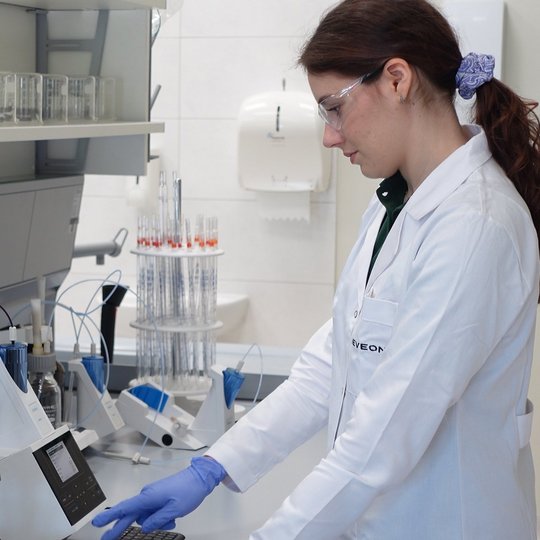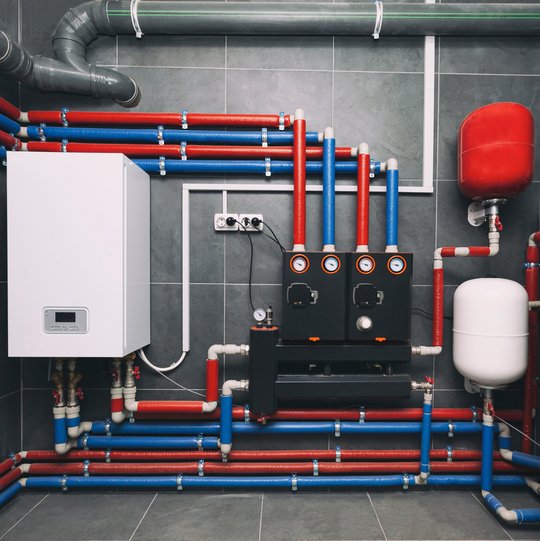The magic circle in our colourful world of foam


Wolfgang Santer, who has already worked with foam for the past 22 years in our company, began by saying that, “The production of foam is a polyaddition process, which means that we combine various raw materials that react with water and expand. We have a perfectly balanced recipe for every type of foam, which depending upon the weather and the available materials, requires only minimal adjustment. The weather plays such a significant role owing to the fact that temperature, air pressure and humidity have a direct effect upon the subsequent characteristics of the foam. For example, higher air pressure tends to lead to heavier foam and therefore we have to alter the recipe and increase the water content of the mixture in order to obtain a stronger propellant reaction. In addition, factors such as the age of the raw materials also influence the foaming process.“
Know-how, experience, a touch of intuition and teamwork
With these ingredients, our master foam makers conjure up NEVEON’s top quality, flexible polyurethane foams, which are used for a diversity of applications. In order that the foam is suitable and possesses the required characteristics, intensive teamwork on the foaming machine is essential. As Wolfgang explains, “The cooperation between all of the colleagues is vital. For example, the machine operator gives the foaming master an immediate signal when the foam in the cream zone starts to alter. The parameters and the raw material percentages are then adjusted at once. During cutting to length, precise checks are made as to whether the blocks roll off properly and the paper has been removed entirely. Here, it is crucial that one can rely on each other and everyone does their job responsibly.”
![[Translate to Englisch:] [Translate to Englisch:] Schaumstoffproduktion Schritt 1](/fileadmin/_processed_/0/0/csm_Foaming_Step.1_5ddc7e607a.jpg)
Step 1
Apart from the main raw materials, polyol and isocyanates, the production of our more than 300 different types of foam involves a large number of additives and dyes. These are stored in containers and then dosed and mixed in the correct ratio in the foaming plant.
![[Translate to Englisch:] [Translate to Englisch:] Schaumstoffproduktion Schritt 2](/fileadmin/_processed_/c/d/csm_Foaming_Step.2_ef0c6ee6a5.jpg)
Step 2
Via the foaming head, the mixture is applied in liquid form to a roller conveyor, which moves forward continually. The raw materials react within a few seconds and immediately expand.
![[Translate to Englisch:] [Translate to Englisch:] Schaumstoffproduktion Schritt 3](/fileadmin/_processed_/e/4/csm_Foaming_Step.3_69e3a0aa58.jpg)
Step 3
The foam assumes its finished form after 100-120 seconds and must only fully react and cool. Subsequently, the blocks are cut to length and transported to the maturation store.
![[Translate to Englisch:] [Translate to Englisch:] Schaumstoffproduktion Schritt 4](/fileadmin/_processed_/7/f/csm_Foaming_Step.4_68f0f5330e.jpg)
Step 4
After the maturation store, the foam blocks pass to the long block warehouse and await processing. Production planning maintains a constant overview regarding the foams in storage and the qualities that must be foamed for forthcoming make up orders.
Would you like to know exactly how foam is made and what you can do with it? Then watch our video!




![[Translate to Englisch:] [Translate to Englisch:]](/fileadmin/_processed_/7/7/csm_shutterstock_2120834093_Bett_auf_Wolken_mit_Mond_verkleinert_ead3836303.jpg)




![[Translate to Englisch:] [Translate to Englisch:]](/fileadmin/_processed_/1/4/csm_siro.tank.TI.N_versuch4_28ea2f4fd4.jpg)

![[Translate to Englisch:] [Translate to Englisch:]](/fileadmin/_processed_/d/a/csm_Formschaumteil_cab1de9434.jpg)